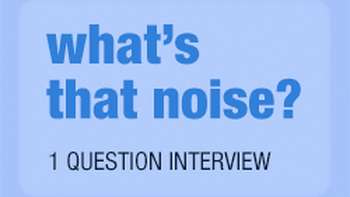Ian Cory (Lamniformes)
SPB: Did you experiment much with different drum sizes, cymbals, or drum heads in the studio when making Sisyphean, or did you have a set approach when you went in?
Cory: I experimented with the kit much less than I expected before going into the sessions. Having spent more years than I should have working over the demos, I came to Pallet Sound with a very specific drum tone in mind. Barring a two minute stretch of blast beats in “Hypothermia” most of the drum parts on the album are pretty slow, which means we could bring in a lot of roominess without losing precision. Seth Engel, the engineer behind the boards for all of the tracking and mixing on Sisyphean, isn’t into artificial reverb, and having heard plenty doom metal albums ruined by tracking their drums in a CGI cathedral, I shared his preference.
Seth had recently brought in a new kit into the studio, a chrome Tama of some kind. It sounded killer once we tuned it up. Seth ended up liking it so much that he started gigging out with it in a few of the bands he drums for. Because the drums themselves sounded so good, most of the experimenting was on Seth’s end, as he moved around the various bafflers and microphones to capture the blend of attack and size that we were looking for. Since I have none of his technical qualifications I’ll spare the Seth the embarrassment of reading my summary of his process.
I brought my own snare and cymbals. The snare is a brass Tama, from an old Granstar kit. I spent my teenage years playing on well-loved house kits, which makes me a terrible judge of when it’s time to change drum heads. Thankfully, Seth set me right with a fresher Remo coated head that I borrowed for these sessions.
I play a pair of Istanbul Alchemy hats and a Sabian Paradigm Crash. The ride I played on Sisyphean was one gifted to me by my old drum teacher Peter Davenport when I was in high school. Even then it was old. The make and model had long since flaked off. It happened to work pretty well as a low crash, so of course I hammered the shit out of it. While we were tracking we could tell that it wasn’t long for this world. It had taken on this, flat china cymbal quality, and a few weeks later a crack perpendicular to the cymbal’s radius opened up. The ride has since been retired.
Like many of the strange technical hiccups that Seth and I ran across while making Sisyphean, this half dead cymbal was a blessing in disguise. Instead of drowning the drums in cymbal soup, the ride sound was short and brutish. It helped the drums sound dirty, earthy, and aggressive. All qualities that aided the heavier side of the record and kept the softer parts from sounding too maudlin. These days I play with a Dark Custom K, an objectively better instrument, but I still have a fondness for the old nameless ride.
I cannot stress how important it was that Seth and I came to drum tracking prepared. There was no wasted time learning parts or finding drum sound from scratch. I had studied the drums on the records that inspired Sisyphean and passed my preferences along to Seth ahead of time. I had also spent the whole summer prior drilling the material with Parker Langvardt, who played bass on the album. All of this preparation allowed us the time for Seth to dial in the equipment and for me to push my performances if certain takes weren’t working without fear of going over our time limit. Preparation saved me time and money, and gave the record a foundation that we could experiment on top of.









